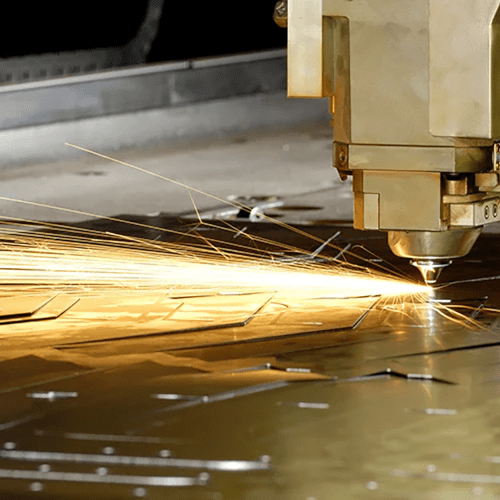
Encoders are the most widely used feedback devices for electric motor control, capable of delivering precise position and speed feedback for closed-loop performance. With numerous technology options to choose from, selection of the right encoder technology is critical.
Gerard Bush, engineering advisor at motion specialist INMOCO, discusses the technology behind incremental encoders.
In a recent article, we looked at the uses of Hall effect sensors and resolvers for the control of electric motors. Due to the design requirements of Hall effect sensors and resolvers, they are both are usually integrated with the design of the motor to achieve commutation feedback and provide closed-loop feedback respectively in extreme environments.
However, the most common feedback device is the encoder, providing accurate position and speed sensing. Available in a range of designs according to the motion control requirement, encoders are typically selected following, and in addition to, the specification of the motor. The variety of encoder designs available means that careful attention is required to their selection, and the initial factor is their physical measurements.
Rotary or linear encoder?
A rotary encoder measures the angular rotation of the motor’s rotor or shaft. This lends itself to closed-loop control for rotational applications, from a robotic limb, through to a spinning machine tool. To achieve this, the signals from its sensors are converted into digital pulses or sine/cosine waveforms, which the drive or controller interprets for speed and position management.
Alternatively, a linear encoder can be preferable for applications that involve a straight-line of operation, such as a CNC machine or three-axis gantry. A linear encoder directly measures true linear position, while a rotary encoder interprets linear travel by converting shaft rotation. The difference is that factors such as mechanical compliance or backlash can affect the reading of the rotary encoder. For straight-line applications that demand the very highest-speed operation, or precision down to resolutions of 0.1 µm (micron) or less, a linear encoder is optimal.
Optical and magnetic encoders
The primary ways an encoder can read changes in speed or position is by optical or magnetic means. Magnetic encoders detect changes in a magnetic field according to rotational or linear motion, with the variations converted into signals that provide position and speed information. As the presence of dust or moisture doesn’t interfere with this measurement, combined with an inherently robust sensor design, a magnetic encoder is durable in tough environments.
Alternatively, optical encoders comprise a light source, a rotating code disc or linear scale divided into lines, and a light detector. This technique achieves greater precision compared to the magnetic principle as the light sensors can detect a higher number of counts compared to magnetic field changes, which are limited by pole spacing. Optical encoders are also immune to high-noise or electromagnetic interference that could interfere with clean signals and distort data transmission.
While modern optical encoders feature better-protected electronics and optics, improving their resilience for lighter industrial applications, magnetic designs, or resolvers, could be better suited to the most demanding environments.
Optical encoder operating principles
On an optical encoder, the disc or linear scale is divided into a quantity of lines that signify the encoder’s resolution. As the count increases, the accuracy within a specific number of counts increases as well. Taking a rotary encoder, as the disc rotates, the light detector registers the on-off pattern of light passing through it, which the photodiode detector converts into a digital signal.
The disc features two rows of lines, offset by half their width or a quarter of a complete cycle (90 electrical degrees). This generates two electrical signals known as Channel A and Channel B. The role of the offset enables the drive or controller to determine the direction of the shaft rotation. Additional channels can help track shaft position and homing as well as helping with noise immunity. This is the operating principle of an incremental encoder, which provides positional information relative to its starting point.
An incremental encoder’s resolution can be multiplied by four if the counting circuit monitors both the rising and falling edges of Channels A and B, a process known as quadrature detection. Higher resolution improves repeatability and enables faster, higher accuracy control loops. Encoder resolutions up to 5,000 lines per revolution are standard, although line counts up to 100,000 are available.
Sine encoders
When Channels A and B of an incremental encoder are output as square waves, the drive or controller reads the edges directly. Instead, it’s possible to read these signals as sine waves, enabling much finer gradations of measurement. This increases resolution and reduces truncation errors, ultimately enabling higher loop gains. As a result, sine encoders can achieve over two million counts per revolution.
Thanks to this capability, sine encoders are intended for applications that demand the highest levels of precision, ranging from high-speed registration to film coating and web control. These designs of encoder also a fit low-speed operations that demand smooth motion control. Thanks to their capabilities, sine encoders can also be used when absolute, rather than relative position sensing, is required – more on absolute versus incremental sensing in the following article.
For assistance selecting the encoder technology to optimise your application, contact INMOCO’s engineers. Supplying feedback technology from reliable brands including Kollmorgen, INMOCO offers objective advice on motion design, backed up by years of examples installed in the field.
About Kollmorgen
Kollmorgen has more than 100 years of motion experience, proven in the industry’s highest-performing, most reliable motors, drives, linear actuators, gearheads, AGV control solutions and automation platforms. Kollmorgen delivers breakthrough solutions that are unmatched in performance, reliability, and ease of use, giving machine builders an irrefutable marketplace advantage.




